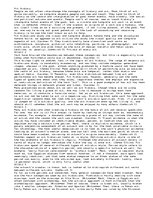People do not often interchange the concepts of history and art. Most think of art, quite correctly, as tangible objects people can see and touch. They tend to think of history as the record and interpretation of past human events, more closely, the social and political actions and events. People can't of course, see or touch history's intangible human events of the past, but, a visible and tangible art work is an event that is somewhat immortal. Even if the creator or origins of a work are a mystery, the art itself lives on as a surviving and present, if not living account, of the past. And so, one way to bring out great potential in the task of accounting and recording history is to use the tool known as art to help.
Art historians study the visual and tangible objects humans make and the structures humans build, as opposed to art critics who study the visual quality and tangible aspects of art.(Gardner 4) They traditionally have classified such works as architecture, sculpture, pictorial arts (sketching, painting, or photography), and the craft arts, which are also known as the arts of design (ceramic and metal wares, textiles, or jewelry).(Gombrich 5)
…


